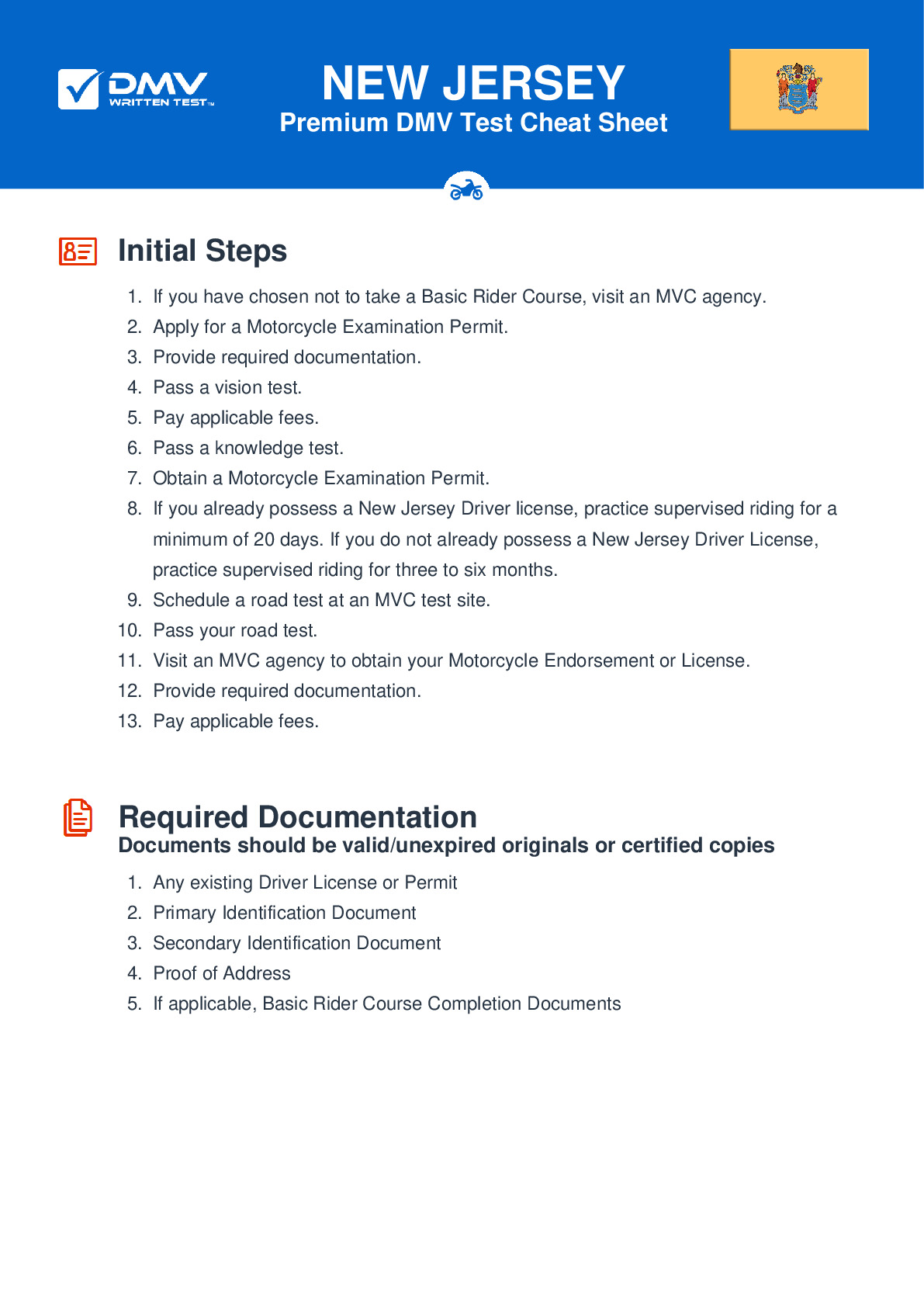2025 New Jersey Motorcycle Permit Test 12
The following questions are from real DMV written motorcycle permit tests. These are some of the actual permit questions you will face in New Jersey when getting your motorcycle learners permit. Each motorcycle theory practice test question has three answer choices. Select one answer for each question and select "grade this section." You can find this button at the bottom of the drivers license quiz. For a complete list of questions and answers for New Jersey please visit https://cheat-sheets.dmv-written-test.com/en/new-jersey/motorcycle.
Number of Tests
Number of Question
Passing Score
1. When riding at night, you should do all of the following, except:
Explanation
When riding at night, use your high beam (unless you are following or meeting another car), take advantage of the headlights of other vehicles, and wear reflective materials to increase your visibility. You should always be flexible about your lane position, selecting whichever position will help you to see, be seen, and have an adequate space cushion.
2. If a tire goes flat while you are riding and you must stop, you should:
Explanation
If either of your tires go flat while you are riding, hold the handgrips firmly, ease off the throttle, and maintain a straight course. If you need to brake, gradually apply the brake to the tire that is not flat. As you slow down, edge to the side of the road, squeeze the clutch, and stop.
3. Your lane position should do all of the following, except:
Explanation
A well-chosen lane position should increase your ability to see and be seen and keep you out of other drivers' blind spots. It should help you avoid surface hazards, protect your lane from other drivers, communicate your intentions to others, help you avoid wind blasts from other vehicles, and offer you an escape route from any hazards that may arise.
4. A rectangular sign may be a:
Explanation
Signs informing road users of road regulations, such as speed limits, are normally rectangular and colored white with black lettering or symbols. Riders must follow the rules posted on these regulatory signs.
5. When slowing or stopping, you should use both brakes:
Explanation
You can achieve maximum stopping power by using both the front and rear brakes. You should use both brakes every time you slow or stop.
6. If a tire goes flat and you must brake, you should:
Explanation
If either of your tires go flat and you must brake, gradually apply the brake of the tire that is not flat (if you are certain of which tire that is).
7. A linked braking system:
Explanation




